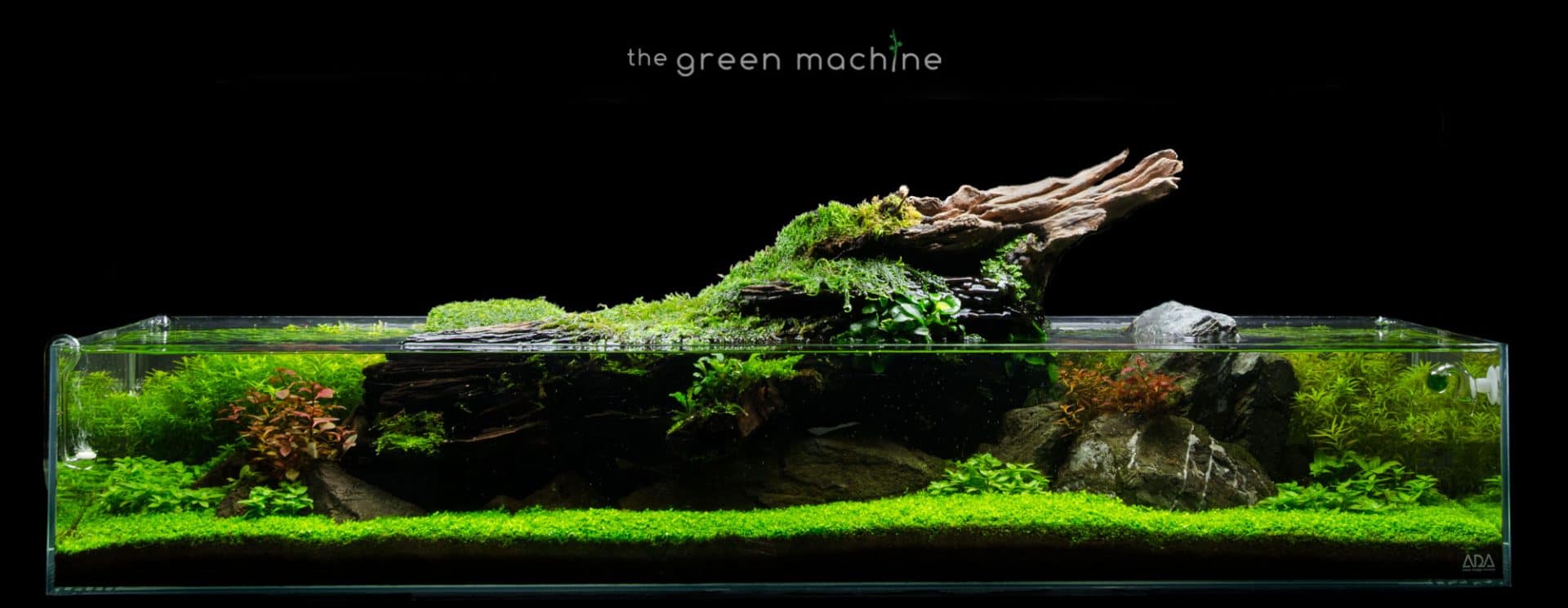
In this article you’ll find a photo and video step-by-step tutorial for a shallow format aquascape, along with a setup specification detailing all of the aquarium plants, hardscape and equipment used to create it. You can follow links to each of the items and if you like you can buy them- we can ship worldwide.
Video
Setup Specification
Aquatic Plants
- Micranthemum ‘Monte Carlo’
- Alternanthera reineckii ‘Mini’
- Rotala rotundifolia
- Staurogyne repens
- Vesicularia dubyana ‘Christmas’ moss
- Ludwigia palustris
- Bucephalandra
- TGM Terrestrial Moss
Hardscape Materials
Aquarium & Cabinet
Substrate System
- ADA Powersand Special S
- ADA Aquasoil Amazonia
- ADA Aquasoil Amazonia Powder
- ADA Tourmaline BC
- ADA Clear Super
- ADA Bacter 100
Filtration System
Heating
- Inline heater
Lighting
CO2 System
Video Transcript
Welcome to The Green Machine, the Nature Aquarium specialists.
Here you can see a tropical, warm water planted aquascape.
Measuring 120 centimetres long, its unusual shallow form results in an attractive and distinctive look.
The lush aquatic plants suggest fertility and age.
It’s a natural miniature underwater garden.
But how was it created?
In this video, we’ll guide you through a tutorial covering how James Findley assembled this living artwork, step by step.
The process begins with an empty glass aquarium within which the substrate layer is built up.
A fertile, healthy substrate is essential for strong aquatic plant growth. Each layer will play a significant role in supporting the ecosystem. Find out more about aquarium substrate on our website, thegreenmachineonline.com
01:00 approx
ADA Aqua Soil Amazonia is the most important substrate component in this layout. It is designed to provide plenty of nutrients suited to aquatic plants.
Once James has flattened the soil, it is time to choose and place the hardscape which consists of ADA Manten Stone and ADA Horn Wood.
It can be quite a challenge when assembling three-dimensional sculptures of this nature, especially when one tries to imagine how various plant species will grow in and around the layout over time.
Small aquariums are somewhat easier to create compared to large or super size tanks.
Visit our website and watch our other videos for many examples of how James creates huge aquascape layouts.
Once the hardscape is in place, our advice is to allow the filter to cycle for three to four weeks before you add plants and livestock, which allows biological filtration to develop and the elimination of any initial imbalances in water biology and chemistry. During the cycling period, regular water changes should be carried out.
Aquascaping may sound complicated to newcomers to this specialised art form, but it is possible for everyone to achieve satisfactory results if they follow the guides given throughout our articles and videos.
It is useful to wet the substrate and rinse the hardscape of any dust before filling the aquarium with water.
PLANTING
Now that the tank has been cycled, it is time to add plants.
You can see that TGM Terrestrial Moss is already growing on sections of hardscape above the water surface. Aquatic and terrestrial moss that grow on hardscape gives the layout a sense of great age.
Aquascaping tweezers are an essential tool for inserting plants into the substrate. This method is far easier than using one’s fingers.
When choosing plant species for aquascaping, one should consider any special requirements such as light intensity, as well as the size and shape of the mature plant. These factors will contribute to deciding the placement of each plant.
Once planting is complete, the aquascape requires regular maintenance with careful attention to how every plant is growing.
Liquid fertilisers are periodically added to the aquarium to provide essential nutrients for plant growth. For every layout, it is important to create the right balance between light, nutrients and carbon dioxide. Once you achieve a sufficient balance, plants flourish, and algae growth is minimal.
Our advice is to plant as heavily as possible when starting a new aquascape, as this usually leads to fewer problems, and allows the layout to achieve a healthy balance sooner.
04:43
The plant that covers the bottom of the aquarium is called Micranthemum ‘Monte Carlo’, and is one of the most popular plants used for aquascaping. It features small leaves, dense growth and spreads to form a carpet-like growth across the substrate.
The taller plant that you can see on the left of the aquarium is called Rotala rotundifolia. The taller plant on the right is called Limnophila hippuridoides.
Other plants used are Vesicularia dubyana ‘Christmas’ moss, Staurogyne repens, Anubias petite and Bucephalandra, all of which are pushed into crevices along the waterline.
You can learn about aquatic plants on our website, where you’ll find their requirements along with images, and you can purchase them from our web shop.
The last plant that James adds is the rich red coloured Ludwigia palustris, which provides a contrast to the green of the other plants.
05:46
Now that you can see the final placement of substrate, hardscape and plants, you can start to imagine how the aquarium will look once it has had time to mature…
MATURE AQUASCAPE
The results of this process are now visible.
You can see how the plants have grown to fill the whole bottom area around the hardscape.
Plant growth is lush and colourful.
Water flows from within the wood hardscape because of a small nano power head with a short length of pipe running into a hole at the back of the wood, which serves to circulate water and keep the moss wet.
Carbon dioxide for plants is diffused into the water using a minimal glass diffuser.
Every species of plant is flourishing.
Aquascapes are an excellent way to bring nature into one’s home or office.
For more planted tank tutorials, visit our website to read our articles and watch our other videos.
We hope you’ve enjoyed this tutorial. You can subscribe or follow us to receive more videos like this.
If you have any suggestions or feedback, we’d love to hear them!
And that brings this tutorial to an end, so farewell for now from all of us at The Green Machine!

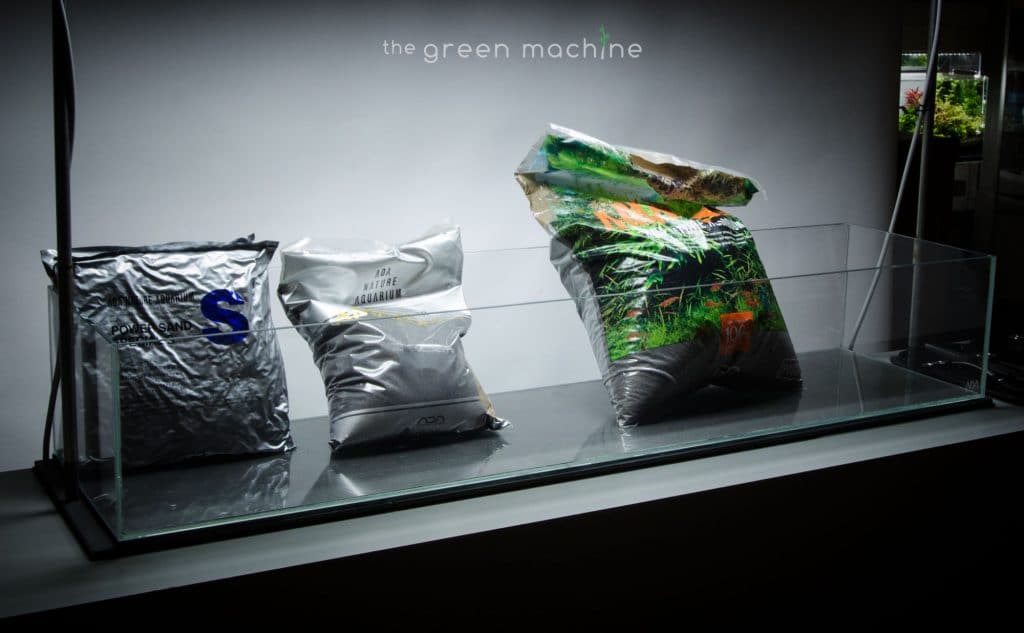
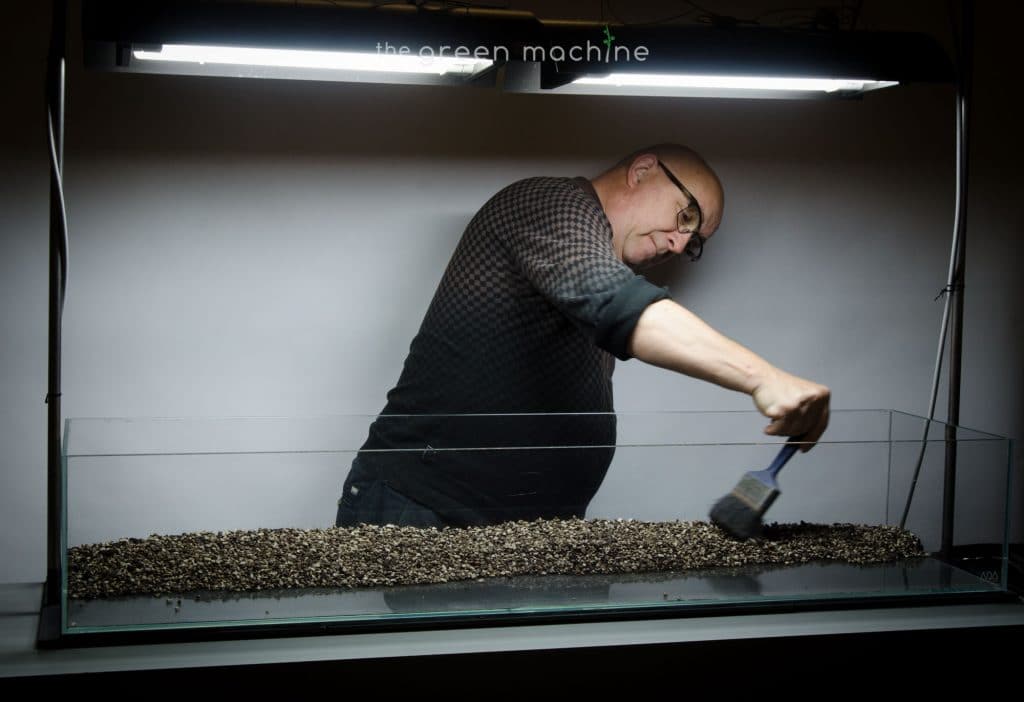
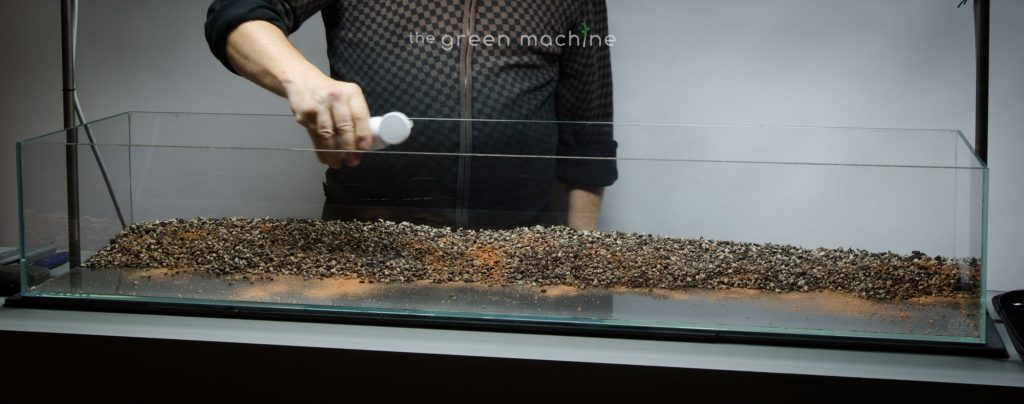
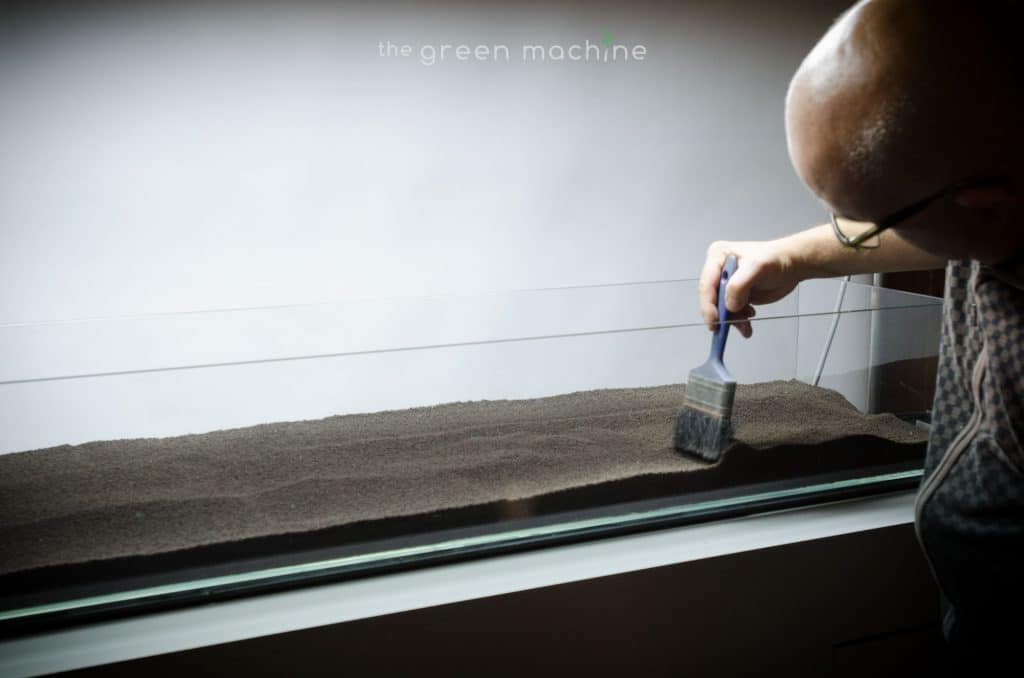
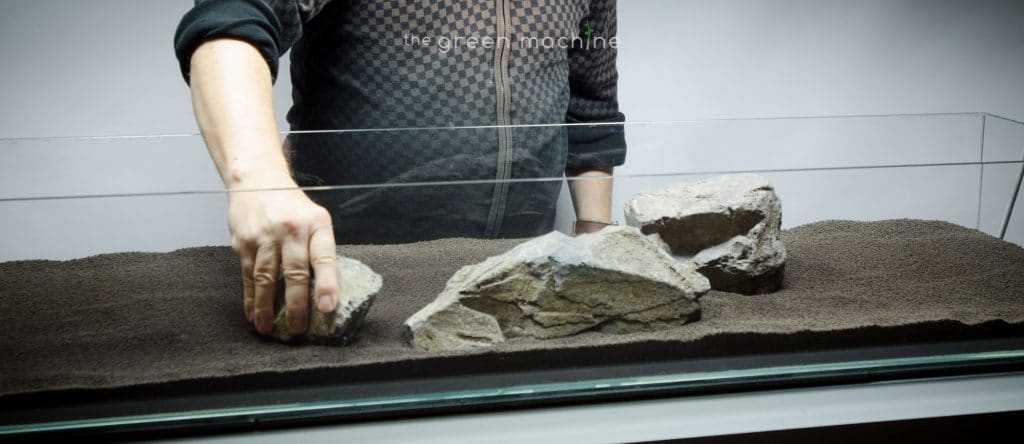
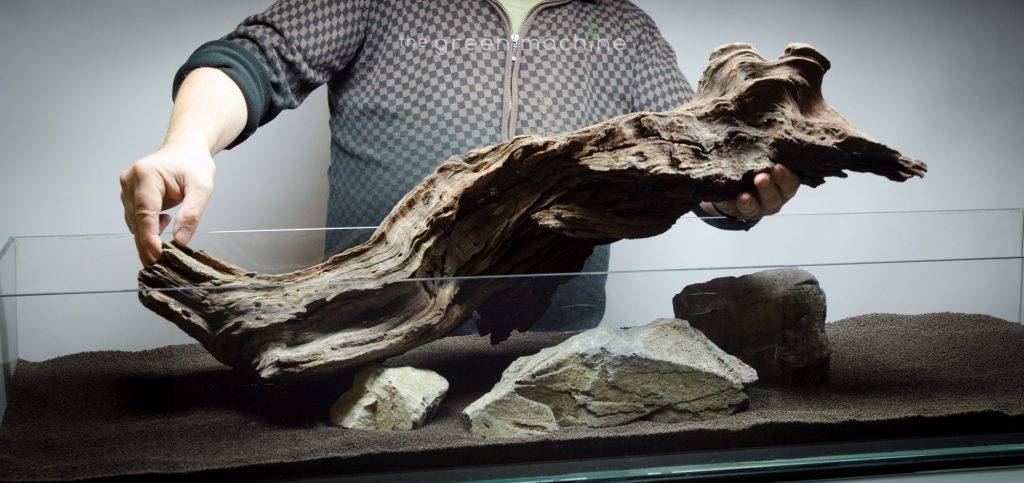
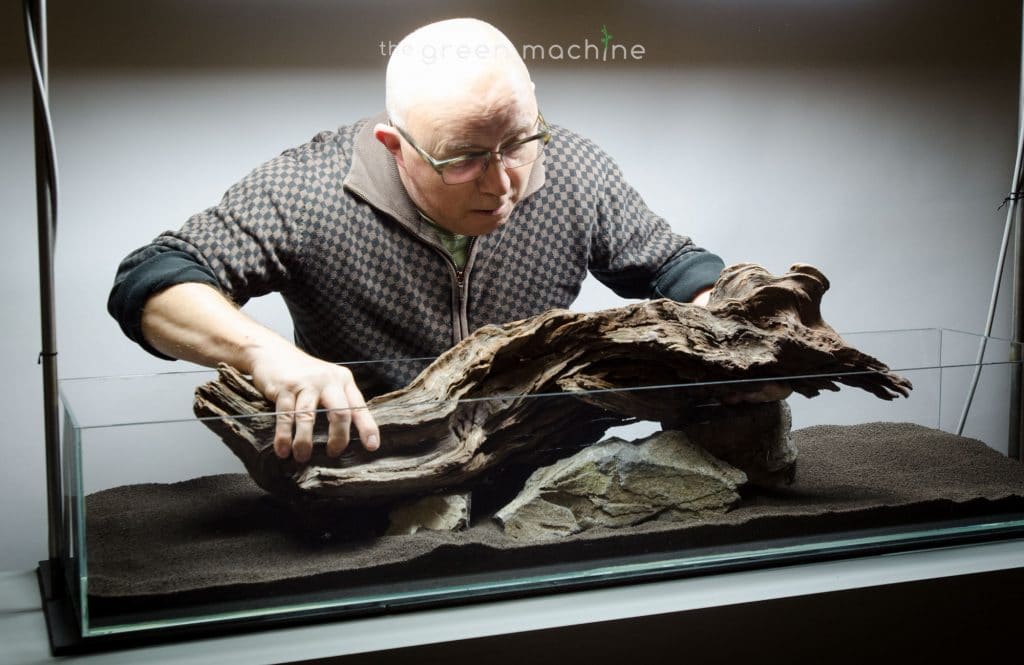
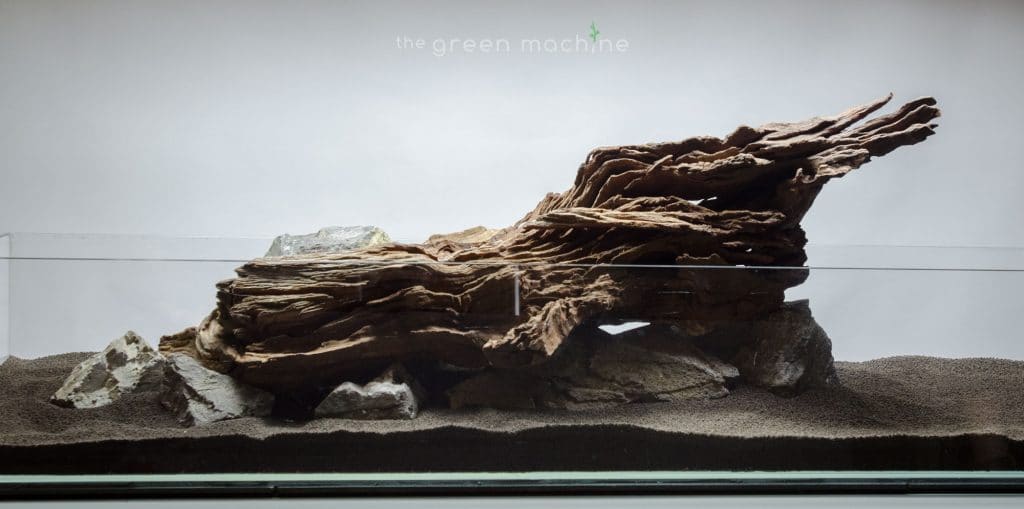
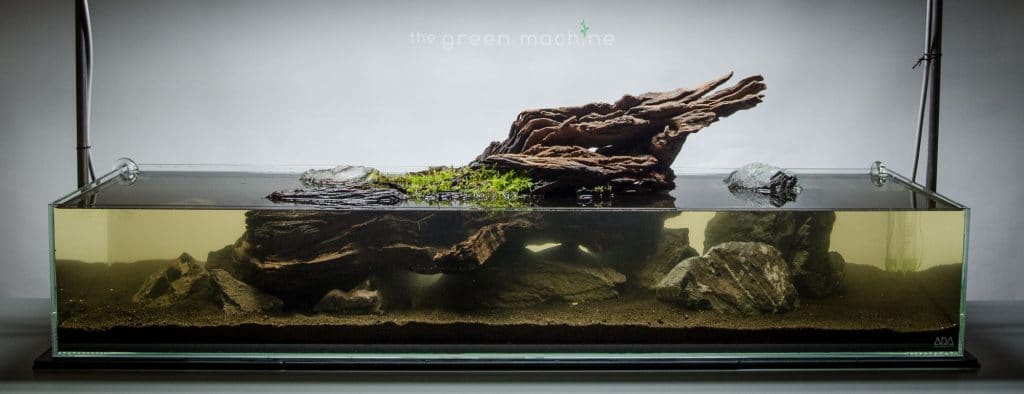
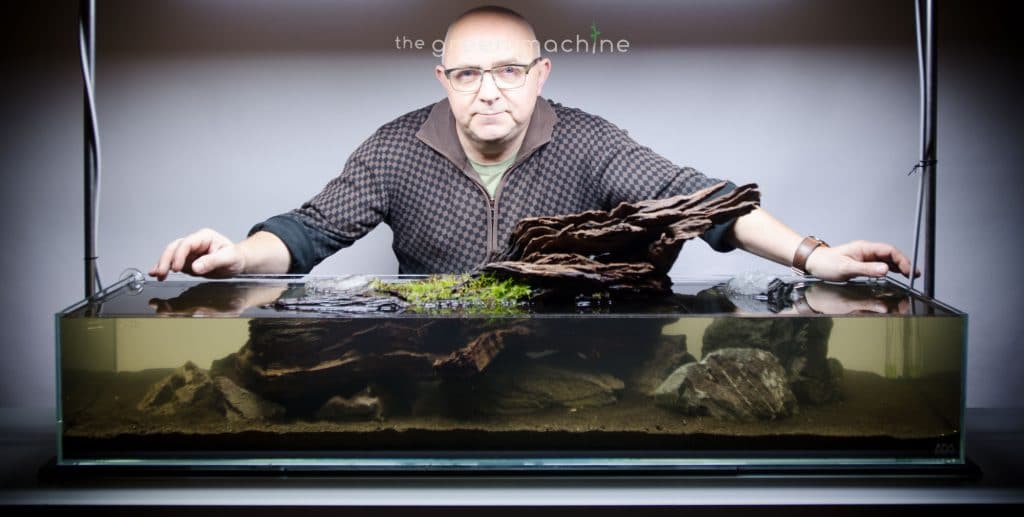
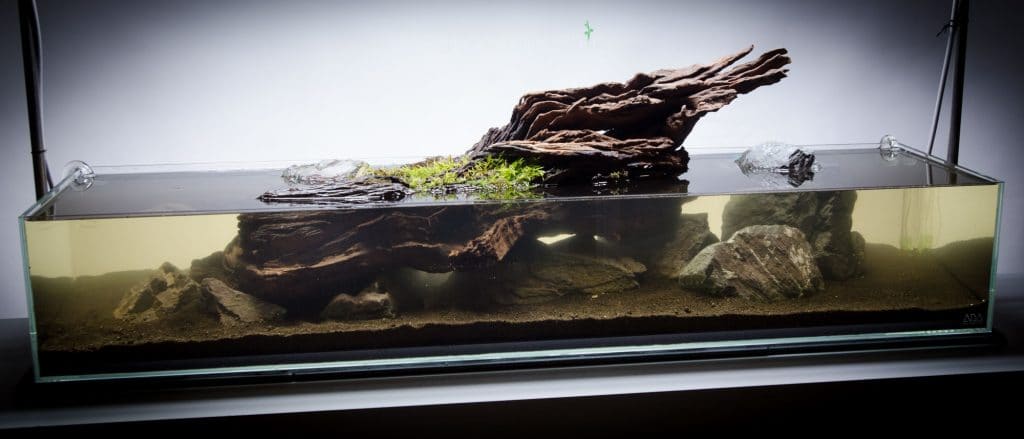
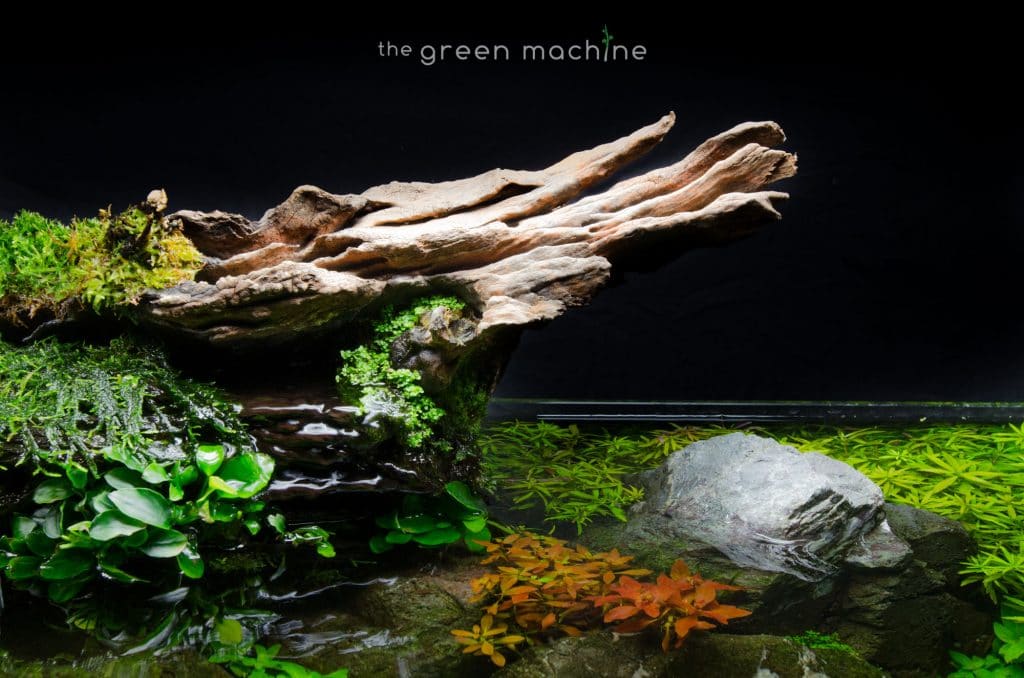
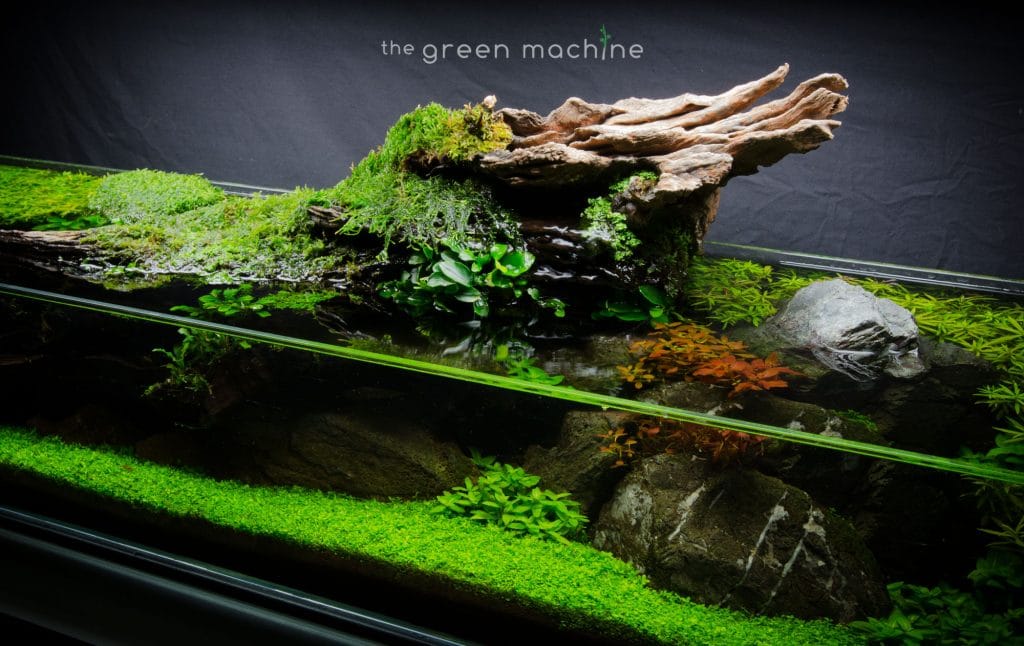
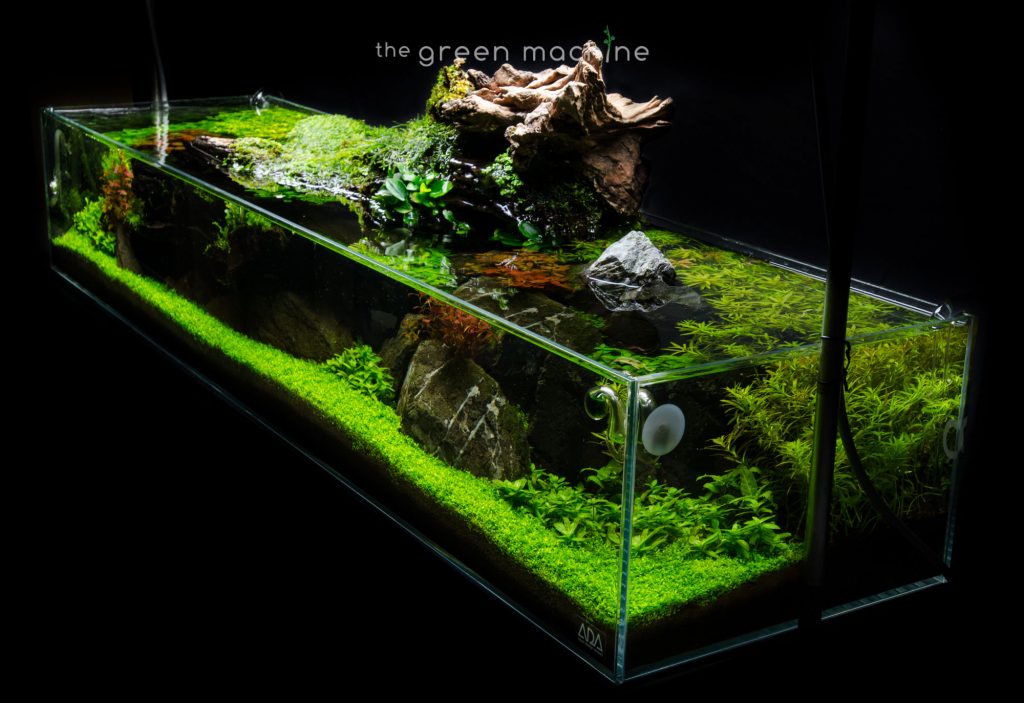
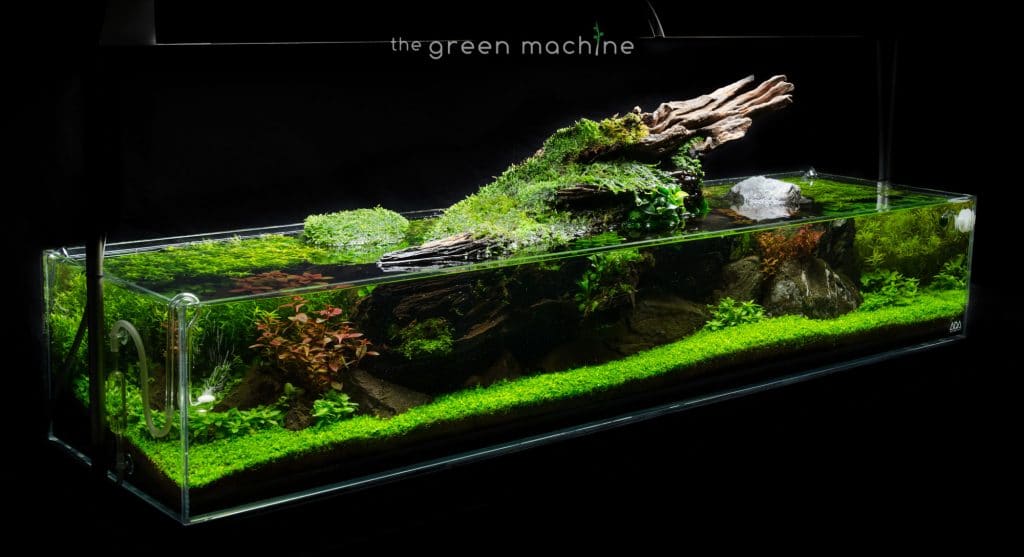
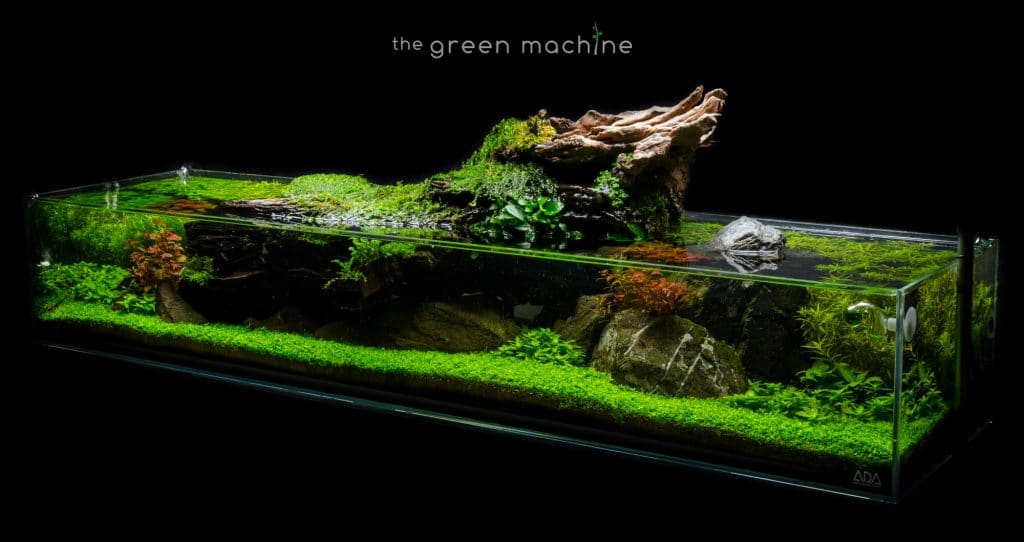
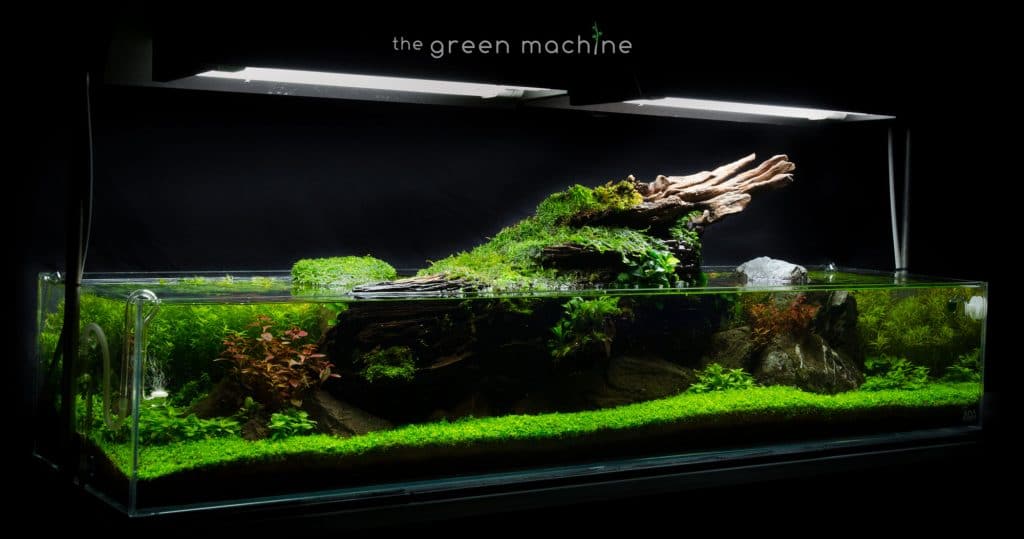
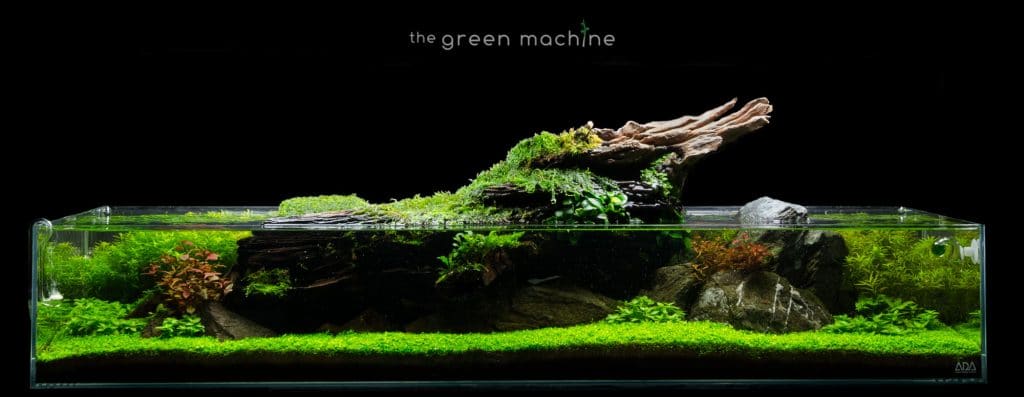
How do you clean this up and change water and how many times a year is needed to change water?
Brilliant video!! Love to be able to achieve something like that on a smaller scale some day.
This Aquarium is my dream! Awesome video I hope to save money to acquire this one day. 🙂